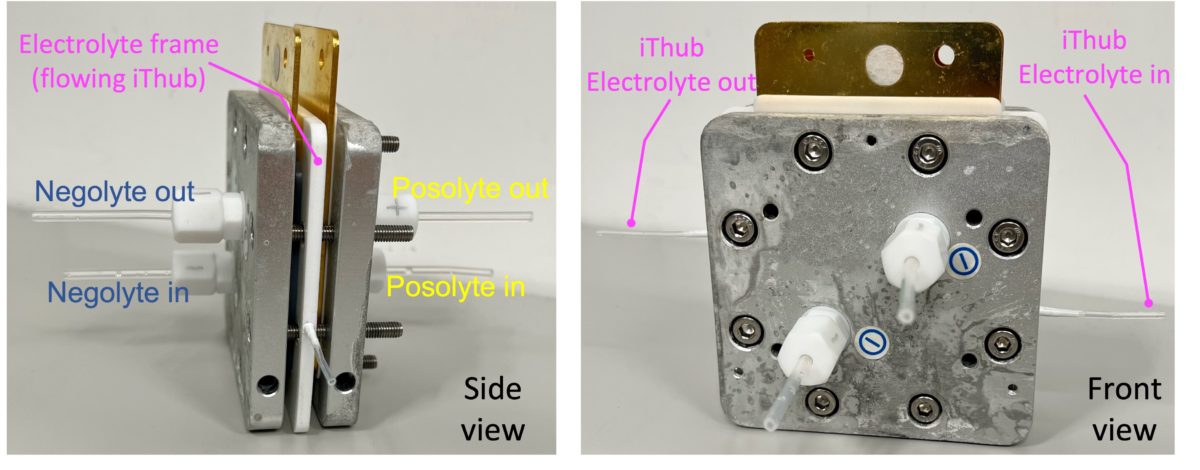Researchers from the City University of Hong Kong have developed a redox flow battery (RFB) based on electrolytes made of zinc (Zn) and cerium (Ce) that they claim may be an ideal solution for renewable energy storage, due to its design flexibility.
“The Zn-Ce flow battery has the advantages of moderate cost and high energy density, but suffers from low efficiency,” researcher Walid Daoud told pv magazine, noting that the devices usually have a lifespan of just a few cycles. “Thus, we proposed a new cell design to improve its efficiency and stability.”
The battery features two membranes to separate the incompatible ions of the two electrolytes. This configuration allows the scientists to custom-assign charge carriers to ions compatible with the electrolytes while separating incompatible species. In addition, the design enables the achievement of high and stable Coulumbic efficiency, while protecting the Zn half-cell from hydrogen ion poisoning.
“The Ce electrolyte is highly oxidative, which poses a challenge towards the stability of anion membrane,” Daoud said. “Thus, the stability and selectivity of anion membrane require further improvement.”
The device achieved a voltage plateau of 2.3 V at 20 mA cm−2, energy efficiency of 71.3% at 60 mA cm−2, and a record average Coulombic efficiency of 94% during cycling.
“It is concluded that the Zn electrolyte with highly reversible Zn plating/striping and suppressed hydrogen evolution reaction forms the foundation of the high Coulombic efficiency,” said the researchers.
Daoud said that in the future, Zn-Ce RFBS could work efficiently in conjunction with PV power generation.
“The system design flexibility and safety advantages will lead to many opportunities. The battery can be easily scaled to meet the various storage demands of solar plants,” he said. “These storage systems are promising because of the low-cost and abundance of zinc. However, the involved metallic zinc deposition induces challenges, such as limited electrode space for zinc deposition compromising the practical energy density compared to the theoretical energy density, and zinc dendrites can potentially pierce the membrane.”
The research group presented the battery technology in “The Renaissance of the Zn-Ce Flow Battery: Dual-Membrane Configuration Enables Unprecedentedly High Efficiency,” which was recently published in ACS Publications.
“This work designs a dual-membrane Zn-Ce RFB to address the incompatibility issue, with which the cell demonstrates a stable and reproducible cycling performance, thus reviving the potential of Zn-Ce RFBs as promising high-power-density rechargeable batteries,” the scientists concluded.
This content is protected by copyright and may not be reused. If you want to cooperate with us and would like to reuse some of our content, please contact: editors@pv-magazine.com.




1 comment
By submitting this form you agree to pv magazine using your data for the purposes of publishing your comment.
Your personal data will only be disclosed or otherwise transmitted to third parties for the purposes of spam filtering or if this is necessary for technical maintenance of the website. Any other transfer to third parties will not take place unless this is justified on the basis of applicable data protection regulations or if pv magazine is legally obliged to do so.
You may revoke this consent at any time with effect for the future, in which case your personal data will be deleted immediately. Otherwise, your data will be deleted if pv magazine has processed your request or the purpose of data storage is fulfilled.
Further information on data privacy can be found in our Data Protection Policy.